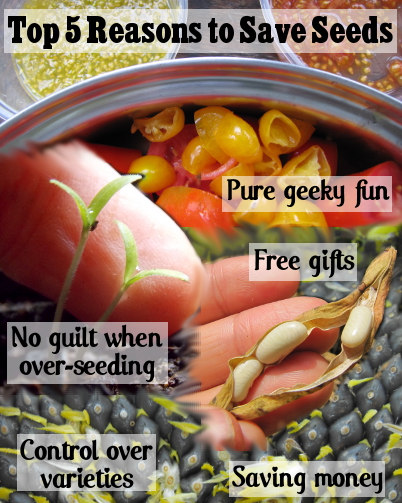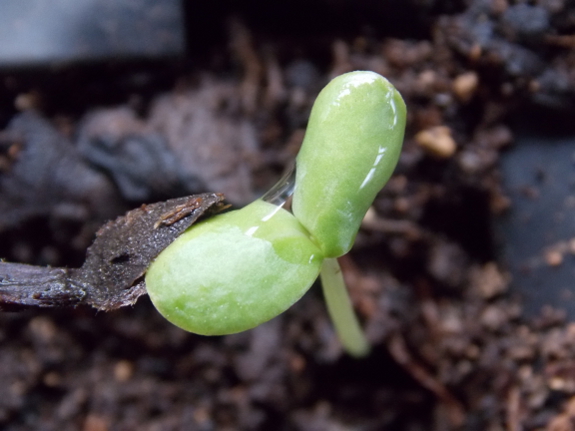
Five reasons to save seeds
 When
I got started with seed saving, I was mostly trying to save
money. But the more seeds I saved, the more I realized the true
benefits go beyond finances. Here are my top five reasons to save
seeds:
When
I got started with seed saving, I was mostly trying to save
money. But the more seeds I saved, the more I realized the true
benefits go beyond finances. Here are my top five reasons to save
seeds:
1. Pure geeky fun. Letting your garden come full circle is very satisfying, and the seeds themselves are beautiful.
2. No guilt when over-seeding.
If you buy seeds, especially expensive ones like hybrid cucumbers, you
may feel obliged to make each seed count. But when you save your
own, you nearly always end up with way too many seeds. So there's
no reason not to put two seeds in each spot, meaning you don't have any
gaps and can select for the hardiest individual.
3. Control over varieties.
When buying seeds, you're at the mercy of the seed companies. If
you love a variety, but the company wants to replace it with something
they consider more profitable, then you're out of luck. But if you
save your own seeds, you'll always have your favorite varieties on
hand.

4. Free gifts.
Since you'll inevitably have too many seeds of each type, you'll be
able to give starter packs of your favorites away. Or you can swap
them with friends or strangers.
5. Saving money. Okay, yes, you save money too. We
spend only $100 per year on seeds even though we grow all of our own
vegetables, plant heavily, and buy from an expensive supplier. With a small backyard garden, you could cut your seed costs to pennies.
If you want to learn more about saving the easiest seeds, check out Weekend Homesteader: August. The more advanced seed saver should start with this post. Happy seed saving!
Want more in-depth information? Browse through our books.
Or explore more posts by date or by subject.
About us: Anna Hess and Mark Hamilton spent over a decade living self-sufficiently in the mountains of Virginia before moving north to start over from scratch in the foothills of Ohio. They've experimented with permaculture, no-till gardening, trailersteading, home-based microbusinesses and much more, writing about their adventures in both blogs and books.
Want to be notified when new comments are posted on this page? Click on the RSS button after you add a comment to subscribe to the comment feed, or simply check the box beside "email replies to me" while writing your comment.

Great advice as usual. I will be planting a few summer varieties from seeds saved last year. I let a few winter veggies go to seed but am not sure how to tell when they are ready. I have broccoli, radish, etc that have flowered and formed seed pods. How do I know when they are ready to harvest? I opened a couple yesterday each containing green and black seeds. Which one gets saved?
Thanks for the continued advice and homesteading tales.